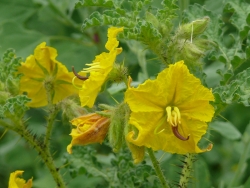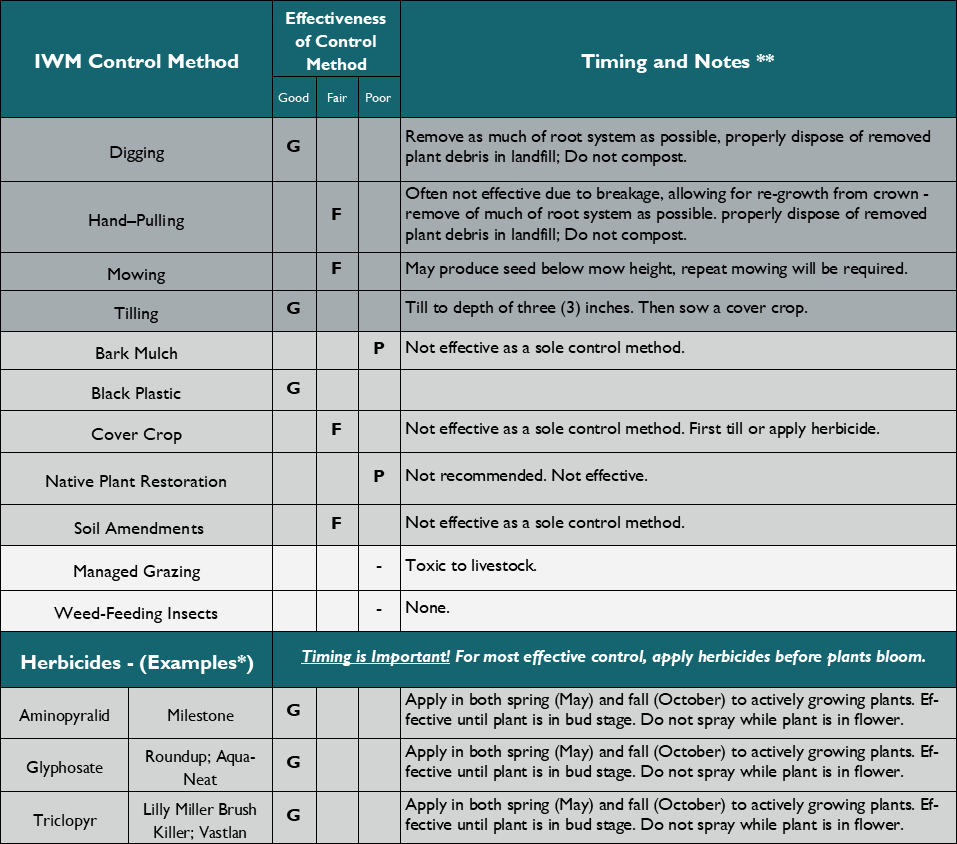
Solanum rostratum
Why is buffalobur a problem?
Buffalobur burs can cause damage and decreased value to livestock wool.
It invades pastureland and decreases viable forage areas due to stem spines and is toxic to livestock if consumed.
It is often mistakenly planted with range seed mixes and is sometimes found in tomato seed packages.
Recommendations for controlling buffalobur
Recognizing buffalobur
Buffalobur is an annual that grows six inches to three feet tall. Stems are covered in spines an eighth to one-half inch long. Its leaves are alternate, deeply lobed and two to six inches long. Bright yellow flowers form in clusters of three to fifteen and are and wheel shaped. Flowers are one inch in diameter.
This plant blooms late June- early August, and seeds mature July-October. It is adapted to sandy soils but will also grow on hard dry soils & cultivated fields.
Buffalobur is drought tolerant and not highly competitive. Buffalobur reproduces by seed alone. Burs can be carried great distances on wildlife.
